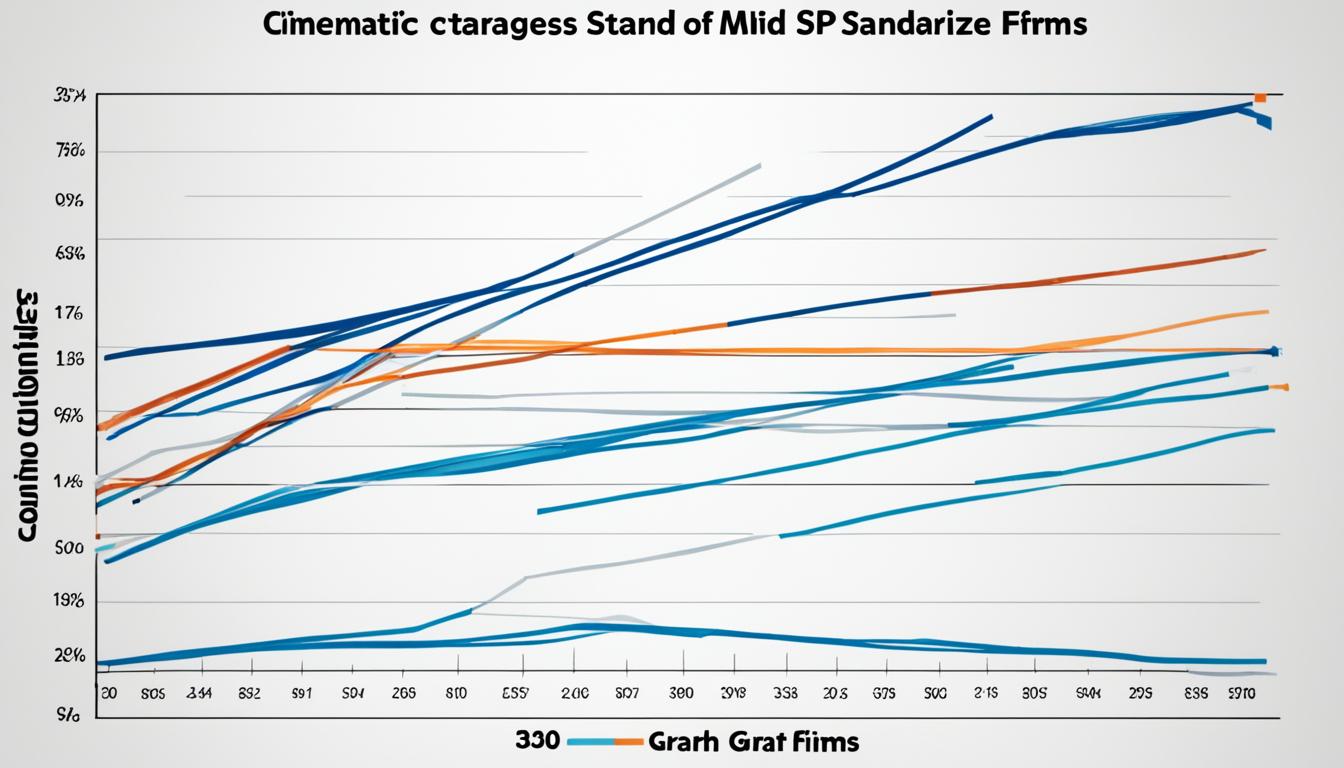When it comes to cybersecurity strategies, medium-sized organizations face unique challenges and requirements. Customizing the SP800-37 framework, developed by the National Institute of Standards and Technology (NIST), can help these businesses effectively manage and mitigate risks. In this article, we will explore the key considerations and tips for customizing SP800-37 strategies specifically for medium-sized businesses. By understanding the specific needs and resources of your organization and tailoring the framework accordingly, you can enhance your cybersecurity measures and protect your valuable assets.
Here are some actionable insights and helpful tips to guide you in customizing SP800-37 strategies for your medium-sized business:
- Evaluating the specific business requirements and objectives to ensure alignment with the framework
- Comparing the SP800-37 framework with other risk management frameworks, such as ISO 31000, to determine the best fit
- Adapting the framework to suit the unique circumstances, resources, and risk appetite of your organization
- Identifying the most critical cybersecurity risks for your business and prioritizing them in your risk management strategy
- Implementing the necessary controls and measures to mitigate identified risks effectively
- Regularly reviewing and updating your customized SP800-37 strategies to stay current with emerging threats and evolving business needs
With these insights and approaches, you can navigate the customization process of the SP800-37 framework and develop a robust cybersecurity strategy tailored to the specific requirements and challenges faced by medium-sized businesses.
Understanding ISO 31000 Risk Management Standard
The ISO 31000 is an internationally recognized risk management standard that provides guidelines, principles, and a framework for managing risks within organizations. It emphasizes a proactive and integrated approach to risk management and can be applied to various sectors and industries.
The standard encourages organizations to establish and implement effective risk management systems to identify, assess, treat, and monitor risks that could impact their objectives. It promotes a risk management culture that involves all levels of an organization and provides flexibility for customization based on the organization’s specific needs.
Implementing the ISO 31000 risk management standard offers several benefits, including:
- Enhanced risk identification and assessment processes
- Improved decision-making based on a comprehensive understanding of risks
- Integrated risk management into organizational processes
- Proactive identification and mitigation of potential risks
- Alignment with industry best practices and international standards
The ISO 31000 standard provides a solid foundation for organizations to develop and maintain effective risk management systems. By following its guidelines and framework, organizations can minimize the negative impact of risks, capitalize on opportunities, and safeguard their long-term success.
| ISO 31000 | Key Features |
|---|---|
| Guidelines and Principles | Provides guidance on risk management principles, framework, and process implementation |
| Risk Assessment | Emphasizes the importance of identifying, assessing, and monitoring risks that could impact objectives |
| Integrated Approach | Promotes the integration of risk management into all areas of the organization |
| Customization | Allows organizations to customize the framework to meet their specific needs |
| Continuous Improvement | Encourages organizations to continually monitor, evaluate, and improve their risk management processes |
Exploring NIST SP 800–37
In the realm of risk management frameworks, the NIST SP 800–37 holds a crucial position for federal agencies and organizations within the United States. Designed to provide comprehensive guidance on managing risks associated with information systems, particularly cybersecurity risks, this framework is a go-to resource for safeguarding federal information systems from potential threats.
The centerpiece of the NIST SP 800–37 is the Risk Management Framework (RMF), which brings forth a structured and systematic approach to managing risks throughout the lifecycle of an information system. This framework places significant emphasis on continuous monitoring and assessment, ensuring that risks are identified, evaluated, and addressed at every stage of the system’s development and operation.
The integration of security and risk management activities is a critical aspect of the NIST SP 800–37 framework. By seamlessly blending these two domains, organizations can effectively identify vulnerabilities, establish protective measures, and respond promptly to any potential cybersecurity incidents.
Ultimately, the NIST SP 800–37 provides federal agencies and organizations with a robust risk management framework that helps them navigate the evolving cybersecurity landscape. By implementing the guidelines and best practices outlined in this framework, these entities can enhance their cybersecurity posture, safeguard sensitive information, and protect critical federal systems from potential cyber threats that pose real risks to national security.
Comparing NIST SP 800–37 and ISO 31000
While both NIST SP 800–37 and ISO 31000 are important standards in risk management, they differ in various aspects. These include their scope, focus, target audience, implementation approach, and level of detail. It is crucial for organizations to understand these differences in order to make an informed decision about which framework is best suited for their needs.
Scope and Focus
NIST SP 800–37 primarily focuses on federal information systems within the United States. It places a strong emphasis on cybersecurity risks and provides detailed guidance and control requirements specifically tailored for federal agencies. On the other hand, ISO 31000 has a broader scope and applies to organizations of all types and sectors globally. It provides a general risk management framework with high-level guidance applicable to a wide range of industries.
Target Audience
NIST SP 800–37 is specifically targeted at federal agencies and organizations within the United States. It is designed to address the unique risk management challenges faced by these entities. In contrast, ISO 31000 is intended for a more diverse audience, including organizations of all sizes, sectors, and geographical locations.
Implementation Approach
When it comes to implementation, NIST SP 800–37 offers a structured and systematic approach through its Risk Management Framework (RMF). It provides detailed steps for categorization, selection, implementation, assessment, authorization, and monitoring. On the other hand, ISO 31000 takes a more general and flexible approach, allowing organizations to tailor the implementation to their specific needs and context.
Level of Detail
NIST SP 800–37 provides a high level of detail, offering specific control requirements and guidance for federal information systems’ risk management. It delves into the specific technical aspects of cybersecurity risks. In contrast, ISO 31000 provides general guidance and principles without prescribing specific control requirements. It focuses on establishing a risk management culture and promoting a proactive and integrated approach to managing risks.
In conclusion, organizations should carefully consider the scope, focus, target audience, implementation approach, and level of detail offered by NIST SP 800–37 and ISO 31000. The choice between the two frameworks depends on factors such as industry, organizational goals, regulatory requirements, and geographic location. By understanding these differences, organizations can select the framework that best aligns with their specific risk management needs and requirements.
Considerations for Implementing ISO 31000
When implementing ISO 31000, organizations must take into account several factors to ensure successful risk management. ISO 31000 provides general guidance and principles for managing risks effectively, without prescribing specific control requirements. This allows organizations to tailor their implementation approach based on their unique needs and circumstances.
Here are some key considerations for implementing ISO 31000:
- Exercise Judgment and Expertise: ISO 31000 provides a framework that requires organizations to exercise judgment and expertise when implementing risk management strategies. It’s important to understand the organization’s risk landscape, evaluate potential risks, and select appropriate risk treatment strategies.
- Customization for Organizational Needs: ISO 31000 allows for customization to meet specific organizational needs. Organizations can adapt the framework to their unique context, taking into consideration factors such as industry, size, complexity, and regulatory requirements. This customization ensures that risk management efforts align with organizational goals and priorities.
- Complement with Industry-Specific Standards: Organizations operating in regulated sectors may need to complement ISO 31000 with industry-specific standards or regulatory requirements. These additional standards provide sector-specific guidance and control requirements that address unique risks associated with the industry.
- Align with Industry Best Practices: While ISO 31000 offers general guidance, it is essential to align with industry best practices. Organizations should stay informed about emerging risks, industry trends, and advancements in risk management methodologies. This alignment ensures that risk management efforts remain current and effective.
By considering these factors, organizations can effectively implement ISO 31000 and tailor it to their specific needs, enabling them to proactively manage risks and protect their assets.
Understanding ISO 31000 Implementation Approach
| Implementation Steps | Description |
|---|---|
| 1. Risk Context Establishment | Identify and define the organization’s risk context, including objectives, stakeholders, and external factors that could impact risk. |
| 2. Risk Identification | Systematically identify and assess risks associated with achieving the organization’s objectives. |
| 3. Risk Assessment | Evaluate the likelihood and impact of identified risks to prioritize and focus resources on the most significant risks. |
| 4. Risk Treatment | Develop and implement risk treatment plans to mitigate, transfer, avoid, or accept risks based on the organization’s risk appetite. |
| 5. Risk Communication and Consultation | Establish effective communication channels to ensure stakeholders are informed about risks, risk treatment plans, and risk management outcomes. |
| 6. Risk Monitoring and Review | Continuously monitor and review the effectiveness of risk management processes, making adjustments as necessary. |
NIST SP 800–37 for Federal Agencies

For federal agencies in the United States, NIST SP 800–37 is a crucial risk management framework that offers comprehensive guidance for effectively managing risks associated with federal information systems. This framework takes a structured and systematic approach through the implementation of the Risk Management Framework (RMF), which comprises categorization, selection, implementation, assessment, authorization, and monitoring phases.
NIST SP 800–37 provides federal agencies with the necessary guidance to identify, assess, and mitigate risks to their information systems. By following this framework, federal agencies can ensure that their risk management efforts are aligned with best practices and current standards.
Key Features of NIST SP 800–37 for Federal Agencies:
- Comprehensive guidance for managing risks associated with federal information systems.
- Structured and systematic approach through the Risk Management Framework (RMF).
- Includes categorization, selection, implementation, assessment, authorization, and monitoring phases.
- Aligns with other NIST publications, ensuring consistency in risk management practices.
- Widely adopted by government entities, making it a suitable choice for federal agencies.
By adopting NIST SP 800–37, federal agencies can benefit from a comprehensive risk management framework that provides them with the necessary guidance and support to effectively manage risks associated with their information systems. This framework enables federal agencies to proactively identify and mitigate potential threats, ensuring the security and integrity of their information assets.
Limitations of NIST SP 800–37
While NIST SP 800–37 is a comprehensive and widely used risk management framework in the federal sector, it may have limitations for organizations outside the United States and non-federal entities. The applicability and level of detail provided by NIST SP 800–37 may not meet the specific needs of organizations operating in different sectors or geographical locations.
One of the limitations of NIST SP 800–37 is its focus on information system risks and cybersecurity. While these aspects are crucial for federal agencies, organizations outside the United States or in non-federal sectors may require a more comprehensive approach to risk management that encompasses a wider range of risks and factors.
Applicability to International Organizations
For international organizations, NIST SP 800–37 may not align with their own national or international standards. Different countries may have their own frameworks and guidelines for risk management that are more suitable for organizations operating within their respective jurisdictions.
As risk management is influenced by local regulations, cultural factors, and specific industry requirements, it is essential for international organizations to consider the applicability of NIST SP 800–37 in their particular context. They may need to align their risk management practices with the standards and frameworks that are prevalent in their country or industry.
Evaluation of Suitability
When considering the use of NIST SP 800–37, non-federal organizations should evaluate its suitability by assessing how well it aligns with their unique circumstances. This evaluation should consider factors such as industry sector, organizational goals, regulatory requirements, and geographic location.
Organizations outside the United States may find it necessary to complement NIST SP 800–37 with their own national or international standards to meet their specific risk management needs. By carefully evaluating the limitations and considering alternate frameworks, non-federal organizations can make informed decisions to develop robust risk management practices.
Limitations of NIST SP 800–37
| Limitations | Explanation |
|---|---|
| Focus on information system risks and cybersecurity | NIST SP 800–37 may not address a wider range of risks relevant to non-federal organizations in different sectors. |
| Applicability to international organizations | NIST SP 800–37 may not align with the risk management frameworks and standards prevalent in other countries. |
| Evaluation of suitability | Non-federal organizations should carefully evaluate how well NIST SP 800–37 meets their specific risk management needs. |
Choosing the Right Framework
When it comes to selecting the most suitable risk management framework for your organization, several factors need to be considered. These factors include your industry, organizational goals, regulatory requirements, and geographic location. By thoroughly assessing your specific needs and evaluating the advantages and considerations of each framework, you can make an informed decision.
Some organizations may find value in combining elements from both ISO 31000 and NIST SP 800–37 frameworks, or complementing them with industry-specific standards. Customization is key to ensuring that the chosen framework aligns with your business requirements, risk management needs, and goals.
By choosing the right framework, you can effectively manage risks and protect your assets. It’s important to remember that risk management is not a “one-size-fits-all” approach. The selected framework should cater to your unique circumstances, enabling you to address threats and vulnerabilities effectively.
Benefits of Implementing a Risk Management Framework

Implementing a risk management framework offers numerous benefits for organizations, particularly in the realm of cybersecurity and risk mitigation. By adopting a structured and systematic approach, organizations can proactively identify, assess, and manage risks to safeguard their valuable assets and ensure business continuity. Let’s explore some of the key benefits of implementing a risk management framework:
- Cybersecurity: One of the primary benefits of a risk management framework is its ability to address cybersecurity risks effectively. By following established protocols and best practices, organizations can strengthen their defenses against cyber threats, protect sensitive information, and ensure the integrity and availability of their systems.
- Risk Mitigation: A risk management framework enables organizations to identify and prioritize risks, allowing them to allocate resources and implement appropriate controls to mitigate potential consequences. By taking a proactive approach to risk management, organizations can significantly reduce the likelihood and impact of adverse events.
- Compliance: Implementing a risk management framework helps organizations improve compliance with regulatory requirements and industry standards. By adhering to established frameworks, organizations can demonstrate their commitment to security and risk management, potentially avoiding legal penalties and reputational damage.
- Continuous Monitoring: A risk management framework emphasizes the importance of continuous monitoring and assessment. By regularly evaluating risks, organizations can identify emerging threats, evaluate the effectiveness of implemented controls, and make informed decisions to enhance their security posture.
- Risk-Aware Culture: Implementing a risk management framework fosters a risk-aware culture within the organization. Employees become more conscious of potential risks and their role in mitigating those risks, leading to increased vigilance and adherence to security protocols throughout the organization.
Overall, implementing a risk management framework provides organizations with a comprehensive approach to managing risks, enhancing cybersecurity, promoting compliance, and fostering a culture of risk-awareness. By implementing appropriate frameworks such as NIST SP 800–37 or ISO 31000, organizations can better protect their assets and ensure the long-term success and resilience of their business operations.
Customizing the Framework for Medium-Sized Businesses
When it comes to risk management, one size does not fit all. This is especially true for medium-sized businesses, which have unique needs and resources that require a tailored approach to effectively manage risks. Customizing risk management frameworks such as NIST SP 800–37 or ISO 31000 allows medium-sized businesses to align the framework with their specific goals, risk appetite, and available resources.
Customization begins by evaluating the organization’s business goals and identifying the key risks that need to be addressed. By prioritizing these risks, medium-sized businesses can focus their efforts on implementing targeted risk management strategies that have the greatest impact on their operations.
The implementation approach should also be customized to fit the size, complexity, and operational requirements of the organization. This may involve adapting the framework’s processes and procedures to suit the unique circumstances of medium-sized businesses. By tailoring the implementation approach, organizations can ensure that the risk management framework is seamlessly integrated into their existing operations.
Furthermore, medium-sized businesses may need to make adjustments to the framework to accommodate their specific industry or regulatory requirements. This could involve incorporating additional controls or practices that are relevant to their line of business. By customizing the framework to meet industry-specific needs, organizations can ensure compliance with applicable regulations and standards.
Ultimately, customization of the risk management framework is crucial for medium-sized businesses to effectively manage risks and protect their assets. By aligning the framework with their specific needs, resources, and risk appetite, these businesses can develop a robust risk management strategy that enhances cybersecurity, mitigates potential risks, and safeguards their operations.
Benefits of Customization for Medium-Sized Businesses
Customizing the risk management framework offers several key benefits for medium-sized businesses:
- Optimized resource utilization: By tailoring the framework to their specific needs, medium-sized businesses can allocate resources more efficiently, focusing on the areas of highest risk.
- Improved risk mitigation: Customization allows businesses to address the unique risks they face, resulting in more effective risk mitigation strategies.
- Better alignment with business goals: A customized framework ensures that risk management efforts are closely aligned with the organization’s overall objectives, supporting business growth and sustainability.
- Enhanced decision-making: Customization enables organizations to gather and analyze risk-related data that is specifically relevant to their operations, enabling informed decision-making.
Conclusion: Finding the Right Fit
Customizing risk management frameworks such as NIST SP 800–37 or ISO 31000 is essential for medium-sized businesses to ensure effective cybersecurity and risk management. By carefully evaluating the strengths, limitations, and applicability of each framework, organizations can make an informed decision on which framework aligns best with their unique circumstances.
The chosen framework should be customized to fit the organization’s specific needs, resources, and risk appetite, ensuring that cybersecurity is a top priority and integrated throughout the business operations. This tailored approach will help medium-sized businesses effectively manage risks and protect their assets.
By implementing a customized risk management framework, medium-sized businesses can enhance their cybersecurity posture and mitigate potential risks. It is crucial for organizations to prioritize cybersecurity and adopt a proactive approach in managing the evolving threat landscape. Finding the right fit involves understanding the organization’s goals, evaluating the framework’s capabilities, and ensuring a seamless integration into the existing infrastructure. With a tailored approach, medium-sized businesses can strengthen their resilience and safeguard their valuable assets.







